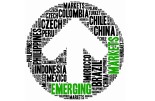MUFG: Are emerging markets approaching a transition point?
MUFG: Are emerging markets approaching a transition point?

Whilst EMs enjoyed a benign environment in H1 2023, with upside surprises to growth and downside surprised to inflation, the mood has since soured in H2 2023.
The leg higher in core bond yields, particularly in the US, on the back of a spike in real rates as well as a stronger US dollar, is beginning to switch the narrative in EMs. Strong domestic demand in EM ex China, rising energy and food prices and the increasing likelihood of a strong El Nino are threatening the disinflation trajectory.
Meanwhile, domestic demand is likely to weaken and we continue to doubt that China will deliver a large stimulus. While keeping a lid on inflation risks, this will eventually undermine EM growth prospects too.
Taken together, an emerging threat is stagflation’s silent anxiety which appears to be lumbering closer on tracks smeared with stick inflation, goaded on by a rocky economic recovery.
FX views
The Federal Reserve’s (Fed) updated projections solidify the factors that have helped the USD defy expectations this year. Surprisingly strong activity and a resilient labour market have led both markets and the Fed to recalibrate the profile for real rates.
In a month of broad USD strengthening and rising oil prices, COP and BRL have been the best performing EM currencies, supported by their rising oil betas and slower rate policy normalisation relative to other 'early hikers'.
After a strong run, the Colombian Peso is trading near its strongest levels year-to-date. While there is room for some additional spot appreciation, the carry component is likely to become an increasingly larger contributor to total returns from here.
Trading views
We should be seeing large sell off in EM assets given the moves in the long end of developed markets. The reason we are not can be put down to local defence in some places. Especially in China where the fixing level to the market clearing price is at a huge gap.
This is not sustainable and at some point there will be a release valve somewhere. In Asia NDF implieds provide better value than spot positions while CEE received trades look risky in this new environment.
Week in review
Turkey raised its interest rate by 500bps to 30.00% while South Africa and Egypt held interest rates. South Africa’s August CPI rose 4.8%y/y. Meanwhile, UAE returned to international bond markets with a USD1.5bn issuance.
Week ahead
Rates meetings in Czech Republic (MUFG and consensus hold at 7.00%), Hungary (MUFG and consensus on hold at 13.00%), and Nigeria (MUFG and consensus on hold at 18.75%). September’s inflation data will be out in Poland.
Forecasts at a glance
In a world of tightening global financial conditions and questions about the liquidity implications of the now-finalised US debt ceiling, we see a degree of macro risks for EM economies in H2 2023, with external funding requirements the central concern.
We expect EM growth to trough this year but remain below potential in the 2024 recovery. The silver lining is that subdued growth should cap inflation, facilitating monetary policy easing where external balances allow.
Core indicators
According to data from the IIF, foreign institutional investors sold USD15.5bn worth of EM assets in August 2023 – the largest amount in 2023 – led by outflows around Chinese equities, accentuating the country’s economic challenges, amid scepticism over sluggish measures to stem the economic slowdown.









